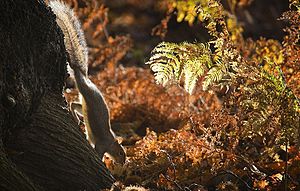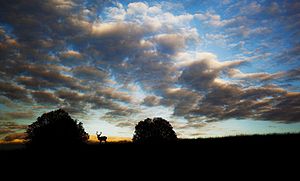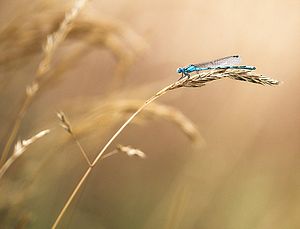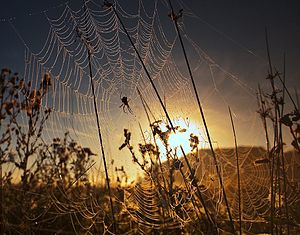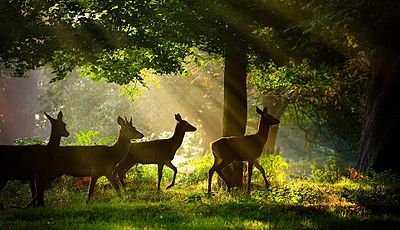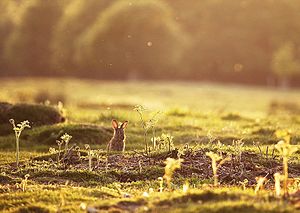- Nandankanan zoo
-
This article is about the zoological park in Orissa . For other meanings, see Nandan Kanan (disambiguation).
Nandankanan Zoological Park 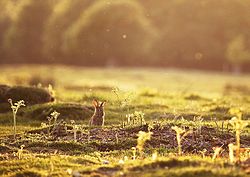
Nandankanan Zoological GardenDate opened 1960[1] Location Bhubaneswar, Orissa, India Land area 400 ha (990 acres)[2] Coordinates 20°24′00″N 85°48′53″E / 20.399965°N 85.814703°ECoordinates: 20°24′00″N 85°48′53″E / 20.399965°N 85.814703°E Number of animals 1659 (2010)[3] Number of species 120 (2010)[3] Annual visitors 2 million[4] Memberships CZA,[5] WAZA,[6][7] SAZARC Website www.nandankanan.org Nandankanan Zoological Park is a 400-hectare (990-acre) zoo and botanical garden in Bhubaneswar, Orissa, India. Established in 1960, it was opened to the public in 1979 and became the first zoo in India to join World Association of Zoos and Aquariums (WAZA) in 2009. It also contains a botanical garden and part of it has been declared a sanctuary. Nandankanan, literally meaning 'The Garden of Heavens',[1] is located near the capital city, Bhubaneswar, in the environs of the Chandaka forest, and includes the 134-acre (54 ha) Kanjia Lake.
A major upgrade was done during 2000 (after the ruins caused by the super-cyclone of 1999 in coastal Orissa). More than 2 million visitors visit Nandankanan every year.
Contents
History
Forest officials decided in 1960 that including rare plants and animals in the Orissa pavilion at the World Agricultural Fair in Delhi would help increase attendance. Word was sent to the forest department to capture as many small animals as possible for the display. In all, the forest department managed to capture two spotted deer, two barking deer, two black buck, one mouse deer, one leopard cat, one flying squirrel, one racket-tailed drongo, one hornbill, two parrots, two hill mynah, one peacock, and a mongoose. In addition, the divisional forest officer of Deogarh captured a pangolin (scaly ant-eater) and two porcupines, and the divisional forest officer of Puri captured a pair of wild boars and a Python. All of these animals were delivered to the Delhi fair and exhibited at the Orissa pavilion.[8]
The State Finance Department raised objections to a zoo in Orissa because of the cost of both establishing and maintaining the facility. While the issue was being debated, animals arrived back at Bhubaneswar in May, 1960, posing problems to the forest department for housing and feeding them. P.Mohandra (Divisional Forest Officer, Puri) and G.K. Das (Divisional Forest Officer, Deogarh) built temporary structures at Khandagiri for the animals, and the community of Jain helped feed them. Discussions about a real zoo started soon after Dr. H.K. Mahatab, then Chief Minister of Orissa, visited the animals.[8]
The initial proposal placed the zoo at Ghatikia close to Khandagiri and Udayagiri caves. However, this was deemed to pose water problems in the future, and eventually the site around the 134-acre (54 ha) Kanjia Lake was chosen. The lake would be developed for recreation as well. A 15-kilometre (9.3 mi) road was built to the site, and Nandankanan Biological Park was officially inaugurated on 29 December 1960 by Sri S.K. Patil, then Indian Minister of Food and Agriculture.[8]
A botanical garden was opened in 1963. The first tiger arrived at the zoo in 1964 from the Alipore Zoo in Calcutta, along with a pair of African lions, a pair of Mugger crocodiles, and a puma. The facility was renamed Nandankanan Zoological Park in 1981.[8]
In 2009 Nandankanan Zoological Park became the first zoo in India to become a member of the World Association of Zoos and Aquariums (WAZA).[6]
Animals and exhibits
The zoo is home to about 1660 individuals representing 120 species, including 42 species of mammals, 54 species of birds, and 24 species of reptiles.[3] The death rate of animals here during the 2008-2009 fiscal year was one of the lowest in India, at 3.1% per year compared to the national average of 10%.[9][10]
White tigers
Nandankanan is famous for its white tiger population,[11] the species it claims to have produced. In 1980,the first litter of white tigers were born to Deepak and Ganga—both normal tawny tigers. Subsequent litters of white tigers have been distributed to Zoos both in India and internationally. Nandankanan is home to over 34 white tigers.[12]
- Other endangered animals
Endangered species such as the Asiatic lion, three Indian crocodilians, Sangal lion-tailed macaque, Nilgiri langur, Indian pangolin, mouse deer and countless birds, reptiles and fish have been breeding successfully at Nandankanan.[12]
- Aqusria
The zoo includes 34 aquaria which are home to a large variety of fresh water fishes.
- Reptile park
The Reptile Park's cave-like entrance is guarded by a life size tyrannosaurus rex.[13] Inside, numerous species of crocodiles, lizards, turtles, and snakes share the park.
- Orchid house
The zoo will have the largest Orchid House of Orissa soon spreading over 5,000 square feet (460 m2). In Orissa alone, 130 species of orchids have been documented to date.[14]
Breeding Programs
The zoo enjoys a good reputation internationally for successfully breeding black panthers, gharials, and white tigers in captivity.[12]
- White tigers
Three white tigers were born in the Nandankanan Zoo in Bhubaneswar, Orissa, India in 1980. Their parents were an orange father–daughter pair called Deepak and Ganga, who were not related to Mohan or any other captive white tiger. One of their wild-caught ancestors would have carried the recessive white gene, and it showed up when Deepak was mated to his daughter. Deepak's sister also turned out to be a white gene carrier. These white tigers are therefore referred to as the Orissa strain, as opposed to the Rewa strain, of white tigers founded by Mohan.[11][15][16][17][18]
When the surprise birth of three white cubs occurred there was a white tigress already living at the zoo, named Diana, from New Delhi Zoo. One of the three was later bred to her creating another blend of two unrelated strains of white tigers. This lineage resulted in several white tigers in Nandankanan Zoo. Today the Nandankanan Zoo has the largest collection of white tigers in India. The Cincinnati Zoo acquired two female white tigers from the Nandankanan Zoo, in the hopes of establishing a line of pure-Bengal white tigers in America, but they never got a male, and didn't receive authorization from the Association of Zoos and Aquariums (AZA)'s Species Survival Plan (SSP) to breed them. The Zoo Outreach Organisation used to publish studbooks for white tigers, which were compiled by A.K. Roychoudhury of the Bose Institute in Calcutta, and subsidized by the Humane Society of India.[19] The Columbus Zoo had also hoped to breed pure-Bengal white tigers, but were unable to obtain a white registered Bengal mate for Rewati from India.[20]
There were also surprise births of white tigers in the Asian Circus, in India, to parents not known to have been white gene carriers, or heterozygotes, and not known to have any relationship to any other white tiger strains. There was a female white cub born at Mysore Zoo in 1984, from orange parents, descended from Deepak's sister. The white cub's grandmother Thara came from the Nandankanan Zoo in 1972. Mysore Zoo had a second female white tiger cub from New Delhi Zoo in 1984. On August 29, 1979 a white tigress named Seema was dispatched to Kanpur Zoo to be bred to Badal, a tiger who was a fourth generation descendant of Mohan and Begum. The pair did not breed so it was decided to pair Seema with one of two wild caught, notorious man eaters, either Sheru or Titu, from the Jim Corbett National Park. Seema and Sheru produced a white cub, and for a while it was thought there might be white genes in Corbett's population of tigers, but the cub didn't stay white.[21][22][23]
There have been other cases of white tiger, white lion, and white panther cubs being born, and then changing to normal color. White tigers which were a mixture of the Rewa and Orissa strains, born at the Nandankanan Zoo, were non inbred. A white tiger from out of the Orissa strain found its way to the Western Plains Zoo in Australia. Australia's Dreamworld, on the Gold Coast, wanted to breed this tiger to one of their white tigers from the United States.
- Crocodilians
Captive breeding units on all the three crocodilian species have been established at Nandankanan Zoo.[24] the year 1980, the gharial (Gavialis gangeticus) bred in captivity for the first time at the Nandankanan Biological Park in Orissa. This successful effort involved the collaboration and co-ordination between international and national zoological parks. The male came from the Frankfurt zoo and the females were from the Nandankanan and Trivandrum zoos. A large part of the credit for this first time ex-situ breeding in captivity goes to the meticulous planning and designing of the breeding enclosure at the Nandankanan Zoo by HR Bustard, which simulates the gharial's natural habitat of a deep flowing river with adequate high-rise sandbanks. The breeding enclosure, together with a judicious mix of adult size classes to from a social group, minimal disturbance and provision of natural food culminated in that success story, which continues to the present date. The Nandankanan Biological park has since provided many zoos around the world with captive bred gharial for display and education.[25] Muggers bred at Nandankanan Zoo have also been released in Satkosia Gorge.
- Pangolins
The zoo was the first in India to successfully breed pangolin. In a programme started before the Central Zoo Authority (CZA) pangolin breeding programme, the zoo authorities started the programme in the nocturnal centre of the animal park. There are 10 pangolins in Nandankanan Zoo, including six females.[26]
Adopt-an-Animal programme
To help involve the general public in animal conservation and raise money, the zoo started Adopt-an-Animal programme in 2008 for all of its animals.[27][28] Adopters receive an adoption certificate and one free entry ticket (for up to 5 people) for each animal adopted. In addition, the adopters name is displayed the entry gate and at the animal's enclosure, and special mention is made in the annual report of the zoo.[29] Adopters can pay from
 500 for a small bird to
500 for a small bird to  230,000 for a tiger for a year. Although other zoos also have adoption programs, Nandankanan was the first zoo the get tax exemption under section 80G of the Income Tax Act.[30] Funds received under the program are used to support the zoo’s care and services for all inhabitants by providing quality food to meet their nutritional requirements, medical care, equipment, enclosure upgrades, and biodiversity enrichment. Parents of two students Sristi and Prakriti from Cuttack were the first to adopt, paying
230,000 for a tiger for a year. Although other zoos also have adoption programs, Nandankanan was the first zoo the get tax exemption under section 80G of the Income Tax Act.[30] Funds received under the program are used to support the zoo’s care and services for all inhabitants by providing quality food to meet their nutritional requirements, medical care, equipment, enclosure upgrades, and biodiversity enrichment. Parents of two students Sristi and Prakriti from Cuttack were the first to adopt, paying  4,000 to adopt a blue and yellow macaw.[31] The State Bank of India donated
4,000 to adopt a blue and yellow macaw.[31] The State Bank of India donated  500,000 to adopt six endangered animals including a one horned rhinoceros, white Bengal tiger, chimpanzee, and orangutan.[32]
500,000 to adopt six endangered animals including a one horned rhinoceros, white Bengal tiger, chimpanzee, and orangutan.[32]References
- ^ a b "Nandankanan Zoo". travelchacha.com. travelChaCha. http://www.travelchacha.com/cities/bhubaneswar/nandankanan-zoo.html. Retrieved 17 April 2011.
- ^ "Nandankanan Biological Park". zandavisitor.com. Zoo and Aquarium Visitor. http://www.zandavisitor.com/forumtopicdetail-526-NANDANKANAN_BIOLOGICAL_PARK-Zoos. Retrieved 17 April 2011.
- ^ a b c "Animal Inventory". nandankanan.org. Nandankanan. http://www.nandankanan.org/animal-inventory.asp. Retrieved 17 April 2011.
- ^ "Nandankanan". nandankanan.org. Nandankanan. http://www.nandankanan.org/. Retrieved 17 April 2011.
- ^ "Search Establishment". cza.nic.in. CZA. http://cza.nic.in/htmlreports/htmlsearchzoo.aspx. Retrieved 2 July 2011.
- ^ a b "Nandankanan now a member of world zoo body". worldzootoday.com. World Zoo Today. 4 July 2009. http://www.worldzootoday.com/2009/07/04/nandankanan-now-a-member-of-world-zoo-body. Retrieved 17 April 2011.
- ^ "Zoos and Aquariums of the World". waza.org. WAZA. http://www.waza.org/en/site/zoos-aquariums. Retrieved 12 April 2011.
- ^ a b c d "History". nandankanan.org. Nandankanan. http://www.nandankanan.org/history.asp. Retrieved 17 April 2011.
- ^ "Nandankanan Zoo". thehindubusinessline.com. The Hindu Business Line. 1 February 2011. http://www.thehindubusinessline.in/2009/05/25/stories/2009052551011400.htm. Retrieved 17 April 2011.
- ^ "Orissa’s Nandankanan Zoo recorded lowest mortality rate in India". orissadiary.com. OrissaDiary.com. 26 May 2009. http://www.orissadiary.com/CurrentNews.asp?id=12778. Retrieved 17 April 2011.
- ^ a b Roychoudhury, A.K., Chapter 34 "White Tigers And Their Conservation", Part IV "White Tiger Politics", Tigers Of The World, The Biology, Biopolitics, Management And Conservation Of An Endangered Species, Noyes Publications, Park Ridge, New Jersey USA 1987
- ^ a b c "Nandankanan Zoo". khordha.nic.in. Khorda. http://khordha.nic.in/nandan/nandan.htm. Retrieved 17 April 2011.
- ^ Life size T-Rex welcomes visitors in Nandankanan zoo
- ^ Species of Orchids in Orissa
- ^ Roychoudhury, A.K., & L.N. Acharjyo. 1983. Origin of white tigers at Nandankanan Biological Park, Orissa. Indian J. Exper. Biol. 21:350-52
- ^ Roychoudhury, A.K., A Genetic Analysis Of The White Tigers In The Nandankanan Bio Park, Orissa, 1990 Journal Of The Bombay Natural History Society
- ^ Roychoudhury A.K. White tigers of Nandankanan lineage. Zoo's Print 4(3):12-3
- ^ Rai, Usha, 1987 Will they outlast this century? Times of India, New Delhi March 15
- ^ Roychoudhury A.K. 1989 About studbook of white tigers in India. Zoo's Print 4:8-9
- ^ Ferguson, David A., & Kohl, Steven G., Developing International Conservation Programs, Tigers Of The World, Noyes Publications Park Ridge, New Jersey USA 1987
- ^ Roychoudhury, A.K., The Indian White Tiger Studbook, Zoo Zen, International Zoo Outreach Org., Tamil Nadu, India 1989
- ^ The White Bengal Tiger http://www.518.ips12.in.us/CamsPhotos/Tigers/3518.aspx.html
- ^ Zoo Dynamics http://www.zoopros.com/zd_016.htm
- ^ Captive Breeding centres of Crocodiles in Nandankanan zoo
- ^ Breeding of Gharial in Nandankanan zoo
- ^ Pangolins in Nandankanan zoo
- ^ "Nandankanan Zoo to start Adopt-an-Animal scheme soon". orissadiary.com. OrissaDiary.com. 23 March 2008. http://www.orissadiary.com/ShowIntFact.asp?id=6220. Retrieved 17 April 2011.
- ^ "Adoption of animals begins in Nandankanan zoo". The Hindu (Chennai, India). 22 October 2008. http://www.hindu.com/2008/10/22/stories/2008102252010300.htm. Retrieved 17 April 2011.
- ^ "Nandankanan offers for adoption of inmates". Orissa.in. Orissa Network. http://www.odisha.in/news/151/ARTICLE/2067/2008-03-22.html. Retrieved 17 April 2011.
- ^ "Adopt an Animal, Get Tax Relief". india.gov.in. Government of India. http://india.gov.in/allimpfrms/alldocs/1978.pdf. Retrieved 17 April 2011.
- ^ "Nandankanan Zoo launches adopt-an-animal scheme". The Hindu (Chennai, India). 25 October 2008. http://www.hindu.com/2008/10/25/stories/2008102550710200.htm. Retrieved 17 April 2011.
- ^ "SBI adopts animals of Nandankanan Zoo". mynews.in. MyNews. 18 November 2008. http://www.mynews.in/News/sbi_adopts_animals_of_nandankanan_zoo_N12743.html. Retrieved 17 April 2011.
External links
 Media related to Nandankanan Zoological Park at Wikimedia Commons
Media related to Nandankanan Zoological Park at Wikimedia CommonsZoos, aquariums, and aviaries Types of zoos Conservation Lists Animals Other topics - Animals in captivity
- Animal training
- Behavioral enrichment
- Captive breeding
- Frozen zoo
- Immersion exhibit
- Nocturnal house
- Wildlife conservation
- Zookeeper
- Zoology
- Portal
- Project
- Category
- Commons
Categories:- Zoos in India
- Tourism in Orissa
- Visitor attractions in Bhubaneswar
Wikimedia Foundation. 2010.

